-
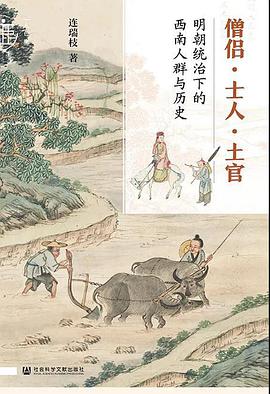
僧侣·士人·土官
本书运用官书、方志、家谱等材料,结合当代民族志、人类学的研究方法,讨论明代云南大理人群的身份认同问题,希望提供一个明朝“统治”该地模式的解释框架。由此,严格来说本书应算是一部社会学著作。全书除绪论和结论外,分为四部分,第一部分描述明初(主要是洪武年间)明军进入大理后,明朝在大理周边设置府州县和土司,以管理当地百姓的大致过程。接着分三类人群(后三部分)来描写明朝大理的山乡社会。一是僧侣,明朝通过在大理地区册封僧侣,招僧侣入京赐给头衔,兴建寺院庄园,扶植宗教活动,建立一套符合官方意识形态的仪式宗教秩序,笼络当地信教之人。二是乡士大夫,明朝通过吸收当地读书人入京读书,参加国子监和乡试,来笼络他们。这些人在回到大理山乡后,被任命为当地的学官,负责宣传儒学,并编写符合明朝正统的家谱、族谱,同时将佛寺改造为祠堂、乡贤名宦祠。通过这一套程序,儒学正统观念、正统祀典文化在大理社会得到传播。三是土官。明朝在大理地区册封大量土司,土司之间、土官和州县之间形成政治平衡。土官在本地打击盗匪、维护地方治安和社会秩序,服从明朝的统治,同时本地经济的货币化促进了山乡流动、经济发展、身份分流和阶层整合。按照作者的建构,西南大理人群各有不同的族群、宗教、阶级类属,“国家”和“地方”各司其职并因应互动,“王朝秩序”由此得以在该地确立并维持。
-
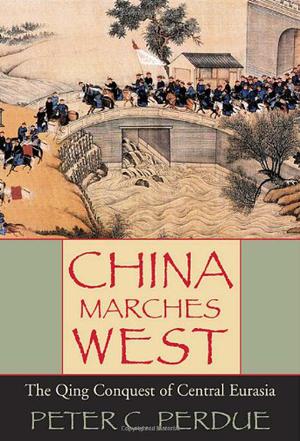
China Marches West
From about 1600 to 1800, the Qing empire of China expanded to unprecedented size. Through astute diplomacy, economic investment, and a series of ambitious military campaigns into the heart of Central Eurasia, the Manchu rulers defeated the Zunghar Mongols, and brought all of modern Xinjiang and Mongolia under their control, while gaining dominant influence in Tibet. The China we know is a product of these vast conquests. Peter C. Perdue chronicles this little-known story of China’s expansion into the northwestern frontier. Unlike previous Chinese dynasties, the Qing achieved lasting domination over the eastern half of the Eurasian continent. Rulers used forcible repression when faced with resistance, but also aimed to win over subject peoples by peaceful means. They invested heavily in the economic and administrative development of the frontier, promoted trade networks, and adapted ceremonies to the distinct regional cultures. Perdue thus illuminates how China came to rule Central Eurasia and how it justifies that control, what holds the Chinese nation together, and how its relations with the Islamic world and Mongolia developed. He offers valuable comparisons to other colonial empires and discusses the legacy left by China’s frontier expansion. The Beijing government today faces unrest on its frontiers from peoples who reject its autocratic rule. At the same time, China has launched an ambitious development program in its interior that in many ways echoes the old Qing policies. China Marches West is a tour de force that will fundamentally alter the way we understand Central Eurasia. -
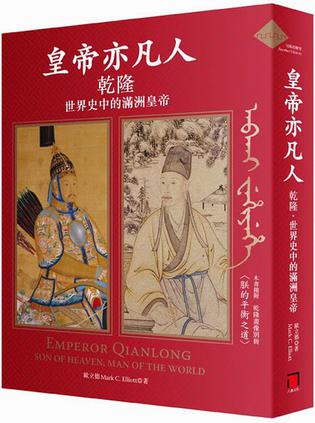
皇帝亦凡人
人們若想了解今天中國的崛起以及思考中國如何重返世界強權之列, 首先應該重新審視中國上一次擁有如此世界地位的時期, 這正是乾隆時代。 世界的乾隆 英國使者馬戛爾尼是否曾向乾隆叩頭?此一引人爭議的歷史事件長久深植人心,乾隆也因此變成停滯帝國的代言人。這一認知又伴隨著十九世紀鴉片戰爭的爆發,更把清代中國型塑為一封閉保守的帝國。 真相到底為何?「新清史」學派領軍人物歐立德將以嶄新觀點,破除此刻板印象:「經過多次交涉後,馬戛爾尼最終得償所願。他不需要叩頭,還獲准可以靠近皇上,把裝有英王喬治三世書信的錦盒遞到乾隆手中。」乾隆治下的清代中國,事實上通過諸多方式,在經濟、文化、政治、學術等層面,多方參與並影響了世界史的發展。本書更把乾隆治下的清帝國與同時代的其他帝國進行比較,讓我們得以在全球背景下解讀乾隆及其朝代,並了解清代中國並無自成一獨立體系而隔離於世界之外。 滿洲的乾隆 清代中國為何能成功建立為一盛世帝國?傳統史學的解釋是「漢化」。事實上,清朝一直被武斷地納入傳統中國王朝的框架之中。而「乾隆是海寧陳家之子」一說,更是以「漢人中心觀」為基礎之偽論。多年來,我們的歷史課本一直被這樣的史觀所掌控。 但是,本書卻讓我們看到,身為滿洲皇帝的乾隆,不僅自傲其滿人血統,同時為了降低「漢化」對滿洲文化的負面影響,更以一系列「滿洲之道」——包括提倡「國語」(即滿語)的學習、突出滿人的勇武之氣、規範薩滿之儀、編纂滿洲史籍——鞏固並強化滿洲人的族群認同。對乾隆而言,如何協調「漢人傳統」與「滿洲認同」之間的衝突,是其畢生最為關注與焦慮的統治課題。 人世的乾隆 乾隆始終被供奉在「康乾盛世」的神主牌上,他的經典肖像就是身穿滿式黃袍端坐龍椅之上。在其長達六十四年的統治之下,清帝國的實力達到頂峰,奠定了近代中國的疆域基礎。可以說,在帝國盛世的宏觀思維下,乾隆的文武雙全形象已趨神化。 然而,日常生活中的乾隆,聰明、勤奮、盡責、虛榮、衝動且易怒。他忠於家庭,更深愛他的妻子富察氏。在其晚年,乾隆將他和妻子的居所保留住原貌,似乎想藉此緬懷青春歲月。歐立德運用大量滿文文獻,解讀了乾隆對祖父、父母、皇子的親情、對后妃的愛情與對文化藝術的性情,真切還原了這位古代帝王的「凡人」面貌。 《皇帝亦凡人》一書為西方「新清史」學派大眾書寫的典範之作。傳統的清史研究限於漢文文獻,都把滿清化約為一中國王朝。歐立德精通滿文,試圖跳出「漢人中心觀」,從滿洲人的角度審視這段歷史,並立體且全方位地塑造了滿洲皇帝乾隆其「天之驕子,世之凡人」的形象。 本書特色: 一、台灣第一本「新清史」學派著作! 結合世界史觀點、滿洲視角與滿文文獻等「新清史」學派特點,本書深入審視並生動再現了滿洲皇帝乾隆及其盛世帝國。 二、本書附贈乾隆畫像別冊〈朕的平衡之道:遊走於滿洲勇士、儒家文人和藏傳佛教聖主之間〉 本別冊針對滿洲勇士、儒家文人、藏傳佛教聖主等不同乾隆形象,從宮廷畫師的視角出發,精選乾隆具代表性之圖像,帶領你探索乾隆的多元面貌與其豐富多彩的人生軌跡。 各界推薦 名人推薦: 通過這部作品,歐立德完全將乾隆和他的王朝放置於世界史的範疇之中……他對這個世界史上異常重要的人物做了簡單明瞭、極為有用而又真實動人的再評價。 ——詹姆斯.比蒂,懷卡托大學(James Beattie, University of Waikato) 歐立德將散落於各種專業論文的研究成果整合到這部具有高度可讀性的著作裡,並將自身洞見和讓人信服的關聯融入其中,得到的便是這個作為軍事領袖、藝術愛好者、滿洲傳統捍衛者、冷酷統治者和充滿熱情的旅行家的畫卷般的乾隆帝形象——一個自視甚高但又企盼向子民證明自己「中國」身分的君主。 ——《亞洲華爾街日報》(Asian Wall Street Journal) -
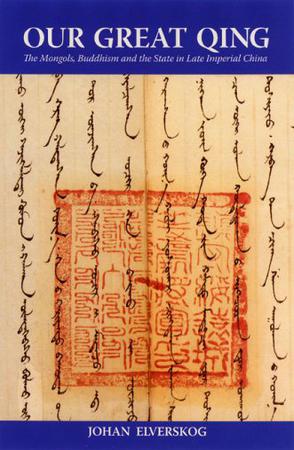
Our Great Qing
"In a sweeping overview of four centuries of Mongolian history that draws on previously untapped sources, Johan Elverskog opens up totally new perspectives on some of the most urgent questions historians have recently raised about the role of Buddhism in the constitution of the Qing empire. Theoretically informed and strongly comparative in approach, Elverskog’s work tells a fascinating and important story that will interest all scholars working at the intersection of religion and politics." —Mark Elliott, Harvard University "Johan Elverskog has rewritten the political and intellectual history of Mongolia from the bottom up, telling a convincing story that clarifies for the first time the revolutions which Mongolian concepts of community, rule, and religion underwent from 1500 to 1900. His account of Qing rule in Mongolia doesn’t just tell us what images the Qing emperors wished to project, but also what images the Mongols accepted themselves, and how these changed over the centuries. In the scope of time it covers, the originality of the views advanced, and the accuracy of the scholarship upon which it is based, Our Great Qing seems destined to mark a watershed in Mongolian studies. It will be essential reading for specialists in Mongolian studies and will make an important contribution and riposte to the ‘new Qing history’ now changing the face of late imperial Chinese history. Specialists in Tibetan Buddhism and Buddhism’s interaction with the political realm will also find in this work challenging and thought-provoking." —ChristopherAtwood, Indiana University Although it is generally believed that the Manchus controlled the Mongols through their patronage of Tibetan Buddhism, scant attention has been paid to the Mongol view of the Qing imperial project. In contrast to other accounts of Manchu rule, Our Great Qing focuses not only on what images the metropole wished to project into Mongolia, but also on what images the Mongols acknowledged themselves. Rather than accepting the Manchu’s use of Buddhism, Johan Elverskog begins by questioning the static, unhistorical, and hegemonic view of political life implicit in the Buddhist explanation. By stressing instead the fluidity of identity and Buddhist practice as processes continually developing in relation to state formations, this work explores how Qing policies were understood by Mongols and how they came to see themselves as Qing subjects. In his investigation of Mongol society on the eve of the Manchu conquest, Elverskog reveals the distinctive political theory of decentralization that fostered the civil war among the Mongols. He explains how it was that the Manchu Great Enterprise was not to win over "Mongolia" but was instead to create a unified Mongol community of which the disparate preexisting communities would merely be component parts. A key element fostering this change was the Qing court’s promotion of Gelukpa orthodoxy, which not only transformed Mongol historical narratives and rituals but also displaced the earlier vernacular Mongolian Buddhism. Finally, Elverskog demonstrates how this eighteenth-century conception of a Mongol community, ruled by an aristocracy and nourished by a Buddhist emperor, gave way to a pan-Qing solidarity of all Buddhist peoples against Muslims and Christians and to local identities that united for the first time aristocrats with commoners in a new Mongol Buddhist identity on the eve of the twentieth century. -
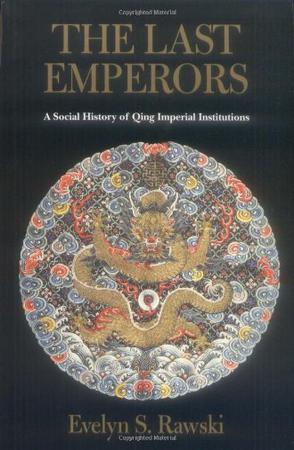
The Last Emperors
The Qing Dynasty (1644-1911) was the last and arguably the greatest of the conquest dynasties to rule China. Its rulers, Manchus from the north, held power for three centuries despite major cultural and ideological differences with the Han majority. In this book, Evelyn Rawski offers a bold new interpretation of the remarkable success of this dynasty, arguing that it derived not from the assimilation of the dominant Chinese culture, as has previously been believed, but rather from an artful synthesis of Manchu leadership styles with Han Chinese policies. -
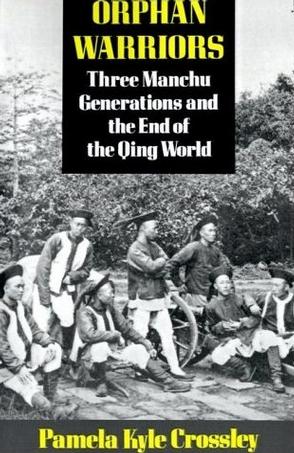
Orphan Warriors